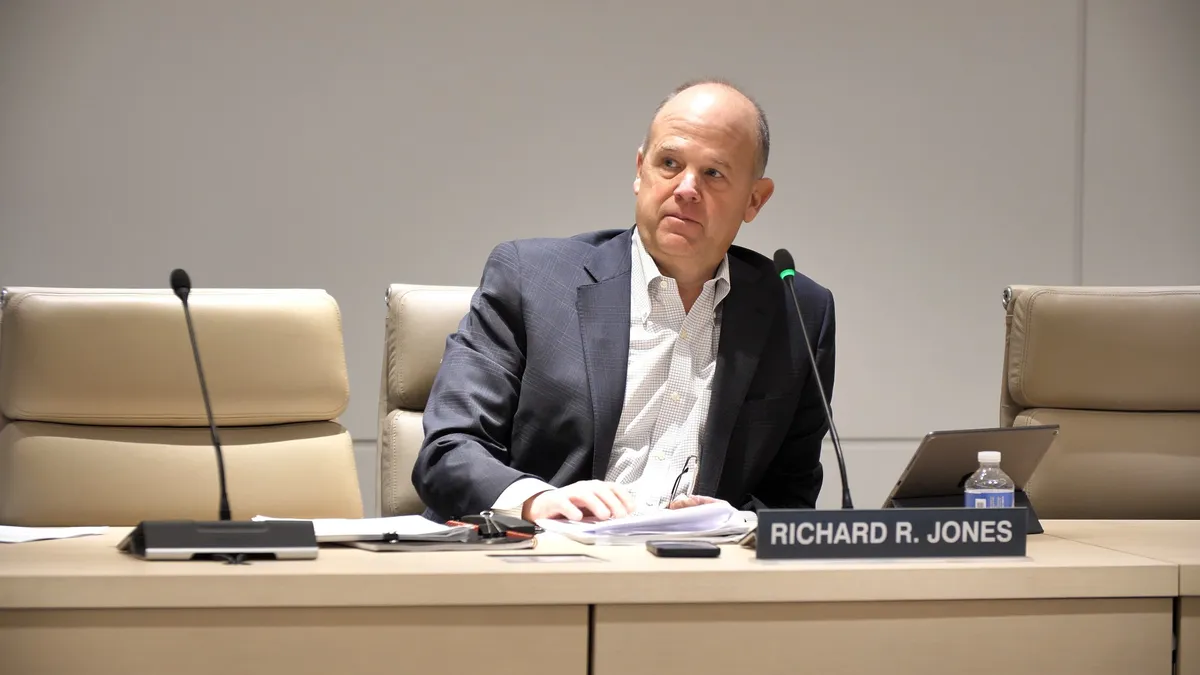Jennifer Ceran knew she wanted to go into business, which is why she majored in communications as a college undergraduate.
“I felt comfortable with numbers, but I was shy and didn’t like public speaking,” Ceran, a former CFO who today sits on the boards of five companies, including NerdWallet, said in an Airbase webcast. “Communications helped me get out of my shell, made me very comfortable to present, to sell my ideas. Being in business is numbers, but it’s also telling your story.”
Throughout her finance career, which began in 1985 as an analyst with Merrill Lynch, Ceran has used communications and a willingness to learn to advance into leadership roles at some of the most well-known companies in the U.S., including Sara Lee, Cisco and eBay.
“Some people are natural leaders but for others it takes practice,” said Ceran, who’s held CFO roles at Coupons.com and digital workplace management company Smartsheet.
Broad experience
Although finance professionals can become CFO by sticking narrowly to either accounting or financial planning, the easier path is to get experience as broad as possible in finance and business. She accumulated leadership experience in treasury, investor relations and financial planning and analysis (FP&A) before moving into the CFO role.
“As CFO, everything is being thrown at you, and you can’t favor what you do best,” she said. “You have to work on where you’re most needed, and that can be anything — tax, treasury, accounting, planning, business operations.”
To build her skills in modeling and planning, she returned to school for her MBA after leaving Merrill Lynch and took roles of increasing responsibility at Sara Lee and Cisco. She joined eBay as its treasurer in 2003.
“That was the job I wanted,” she said. "Early on, I wanted to head up treasury for a public company."
But after riding out the 2008 financial crisis in the treasurer's seat, she said, she was ready to take on more. “I felt like I had seen everything — huge growth, lots of financial crises.”
Eye on IR
At eBay, she asked each of the CFOs she worked with to let her head up investor relations (IR), the most communications-intensive job in finance after the CFO, and both times she was turned down.
“The first time, the CFO said I didn’t know the business well enough, which is fair; I had only been there three years, so I went out and learned the business,” she said. “The second time, I was told I would be great but they wanted an outside-in view.”
To close her knowledge gap about investor relations, she reached out to Mary Meeker, a venture capitalist who at the time was a Wall Street analyst whose portfolio included eBay.
“I asked for 30 minutes, and I think we talked for two hours,” she said. “I learned so much, stuff that I did not expect. Analysts get into the psyche of every leader of the company.”
Eventually she was asked to lead investor relations — while also heading up FP&A.
“I actually wasn’t super successful running both of those departments, having never done either one before,” she said. “It was a grind. I had to work so many hours. But I learned a ton.”
She did well enough to be ranked No. 1 in investor relations in internet businesses by Institutional Investor, an industry publication, and to take her experience to cloud computing company Box as its investor relations head in 2012.
“What I was good at was talking to Wall Street,” she said. “I can take complex data and simplify it. If you think about the sell side and your investors, they don’t have time to have this complicated analysis. They just want the answer.”
Recruiter outreach
While at Box, a recruiter invited her to apply for her first CFO role, at the online coupon company Coupons.com, now Quotient Technology.
“They were looking for someone who was good with Wall Street and with guidance,” she said. “I kind of laughed. They’re not going to hire me. I’ve never been a CFO before, let alone a public company CFO.”
Although she got the job, it was a poor cultural fit for her.
“I was only there for a year," she said. “I was successful in terms of the work I did. The stock tripled and I put in place a lot of discipline, but I didn’t have a lot of passion for the industry and it wasn’t a big, fast-growing business, which is what thrills me.”
The fit was better at Smartsheets, where as CFO she helped scale the finance and accounting functions as the company grew from about $67 million in annual revenue in 2016 to almost half a billion dollars five years later.
“You have to kind of see the future,” she said, “because that’s what your team is looking for. We were going to grow really fast. What are you going to look like when you’re a $500 million-revenue company? You’re going to look very different.”
Knowledge gaps
The main point for finance professionals who want to chart a path to the CFO seat is to close your knowledge gaps so you can gain experience in a variety of roles.
“If they say you’re not ready, ask what you can do to get ready,” she said. “Can I listen in on these meetings? You can just learn on your own these days.”
Many veteran finance professionals are happy to help others manage through unfamiliar problems.
“Having a great network will help you,” she said. “When you don’t know something, there are so many people who do know it. There’s a woman I know right now that’s getting ready to take a company public. She’s never taken a company public before, but is a very qualified CFO. She’s been pinging me a couple times a week asking for advice on certain things. I’m happy to give it to her.”



















